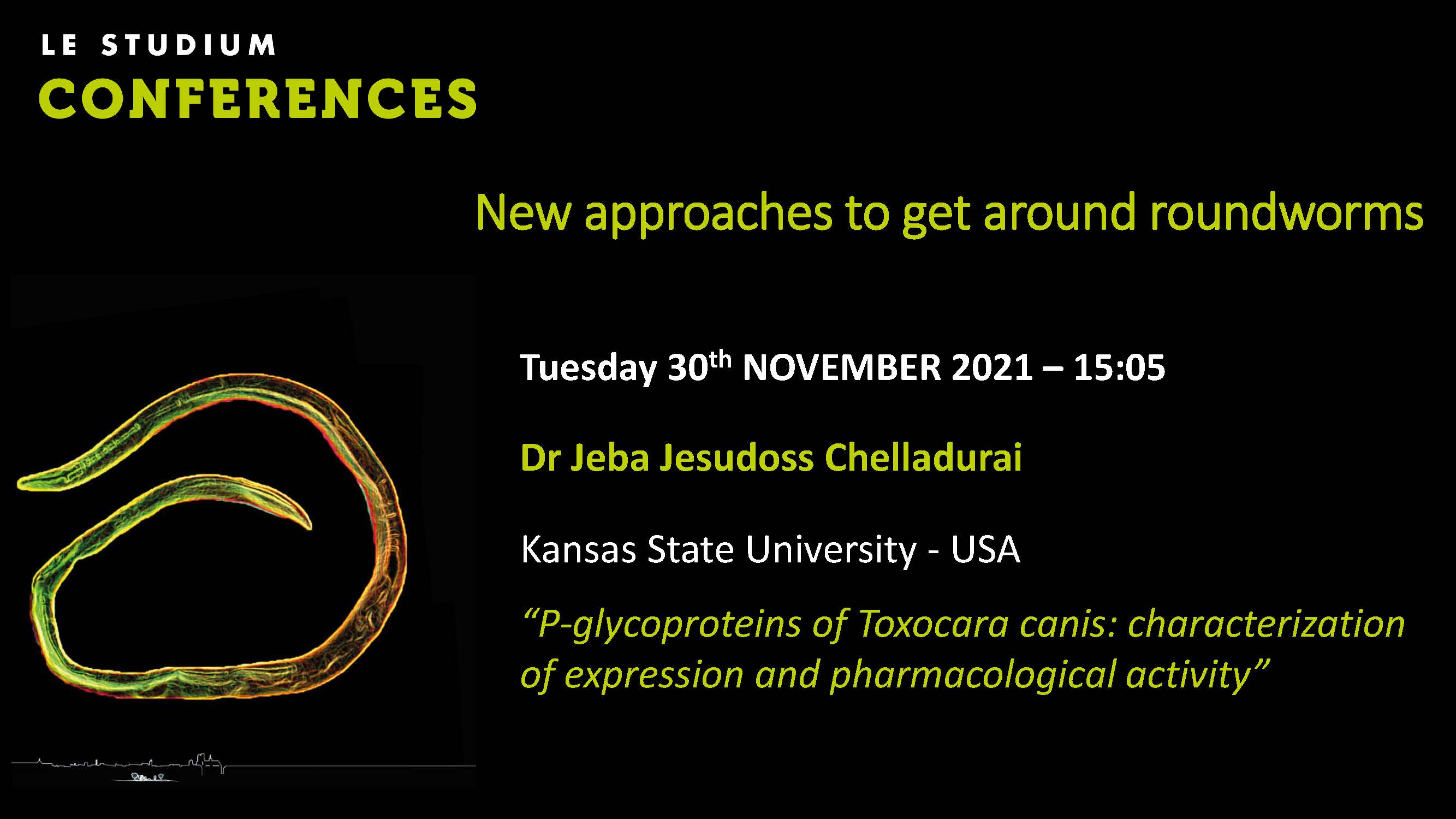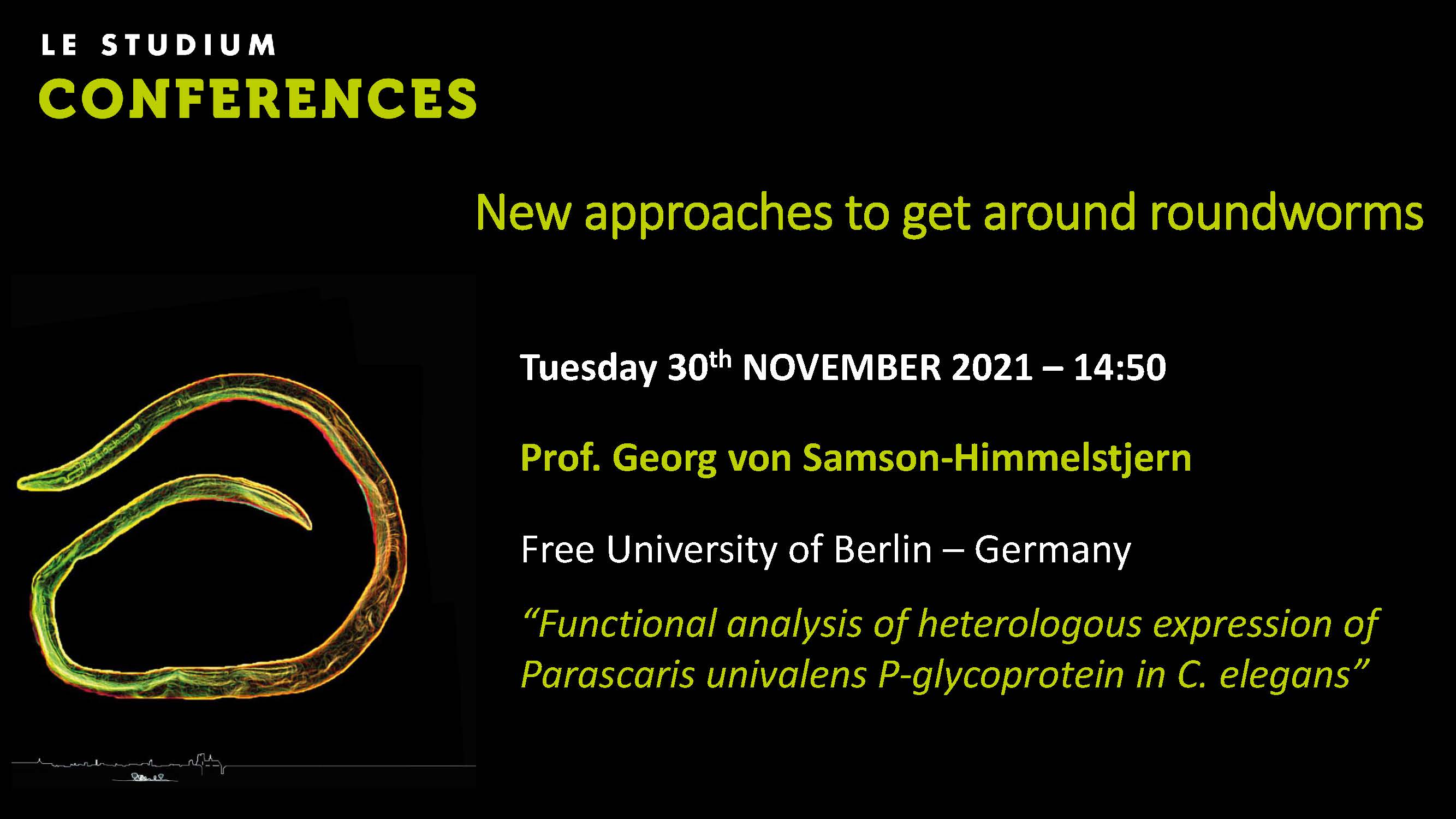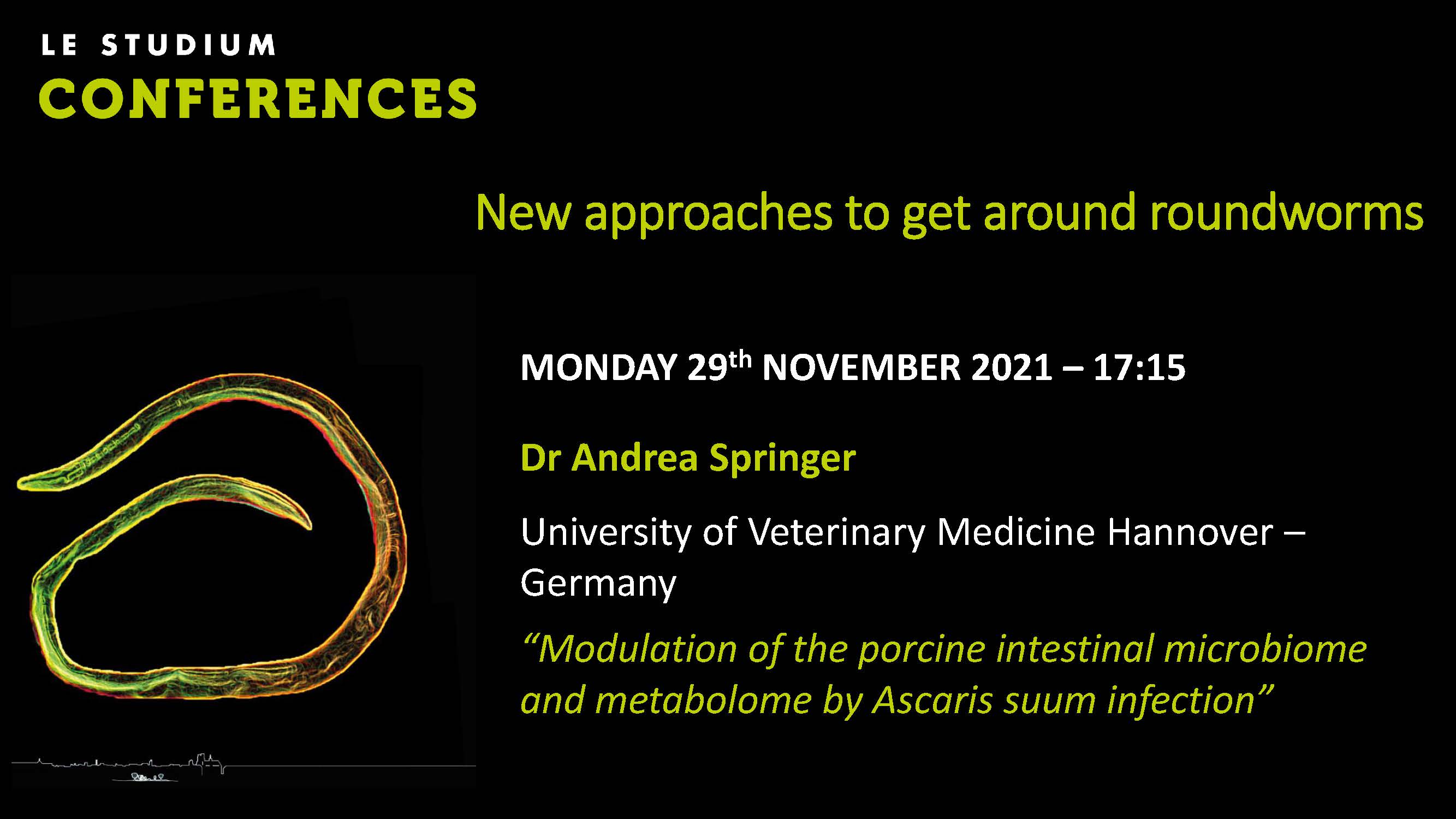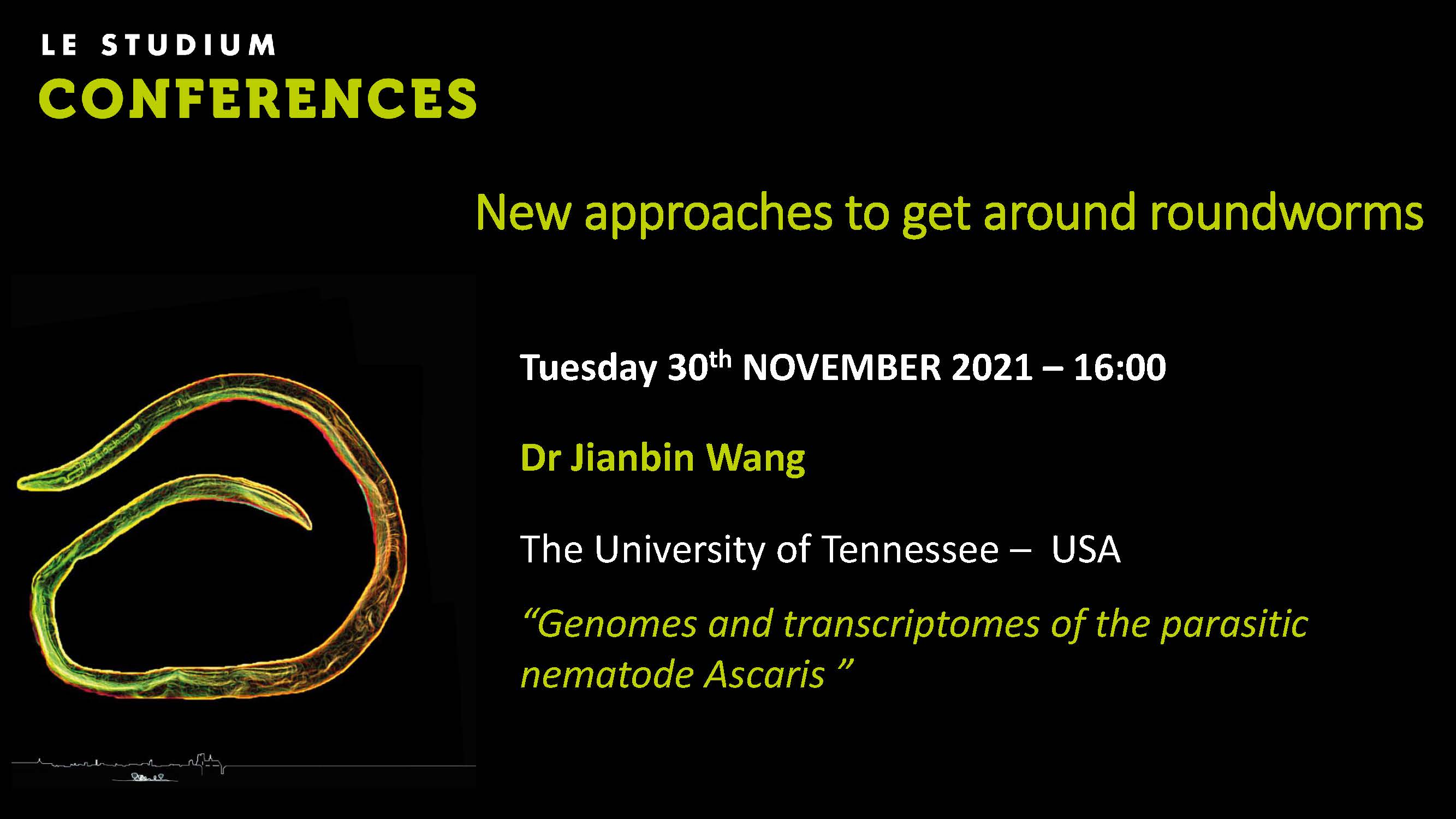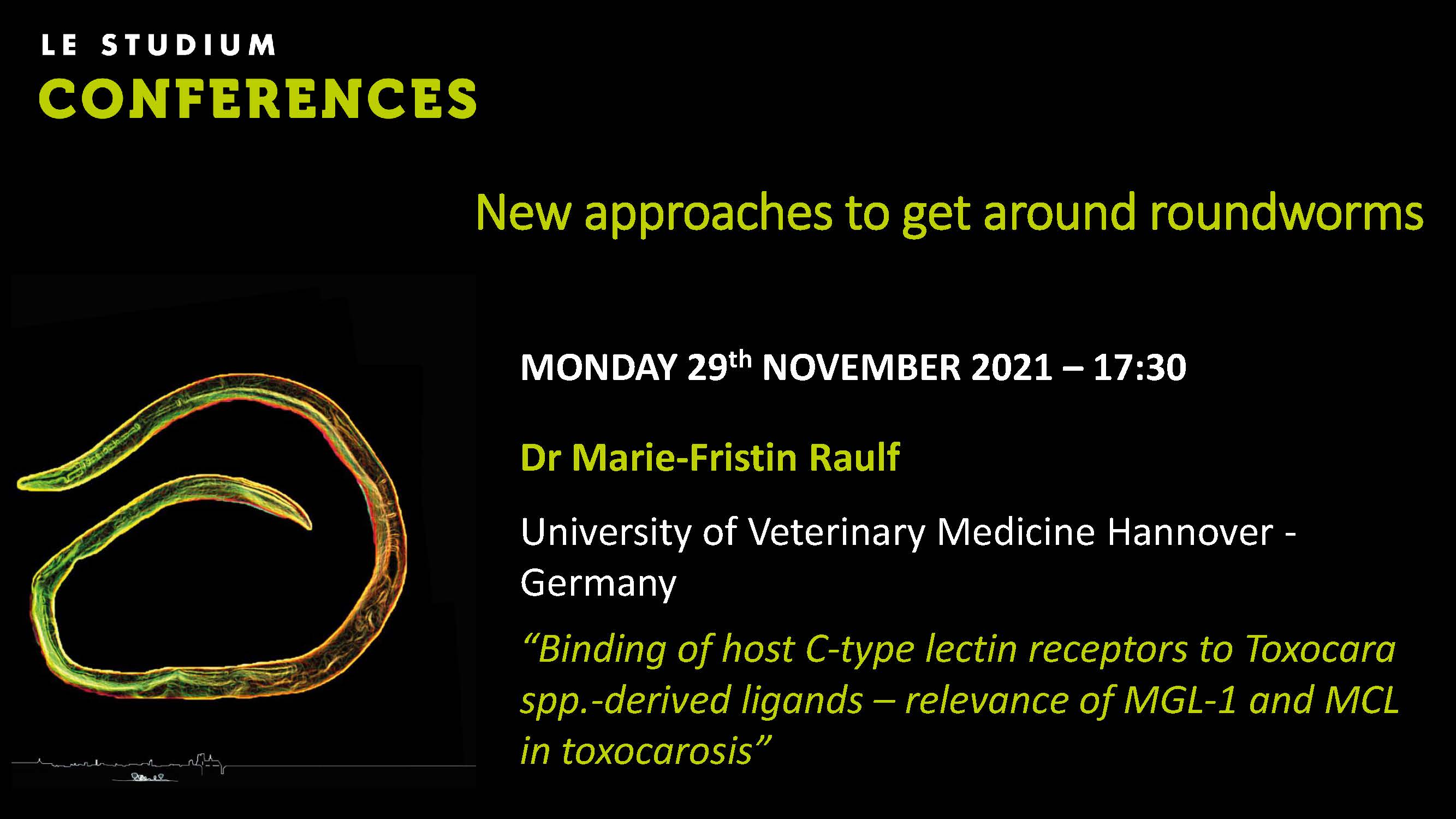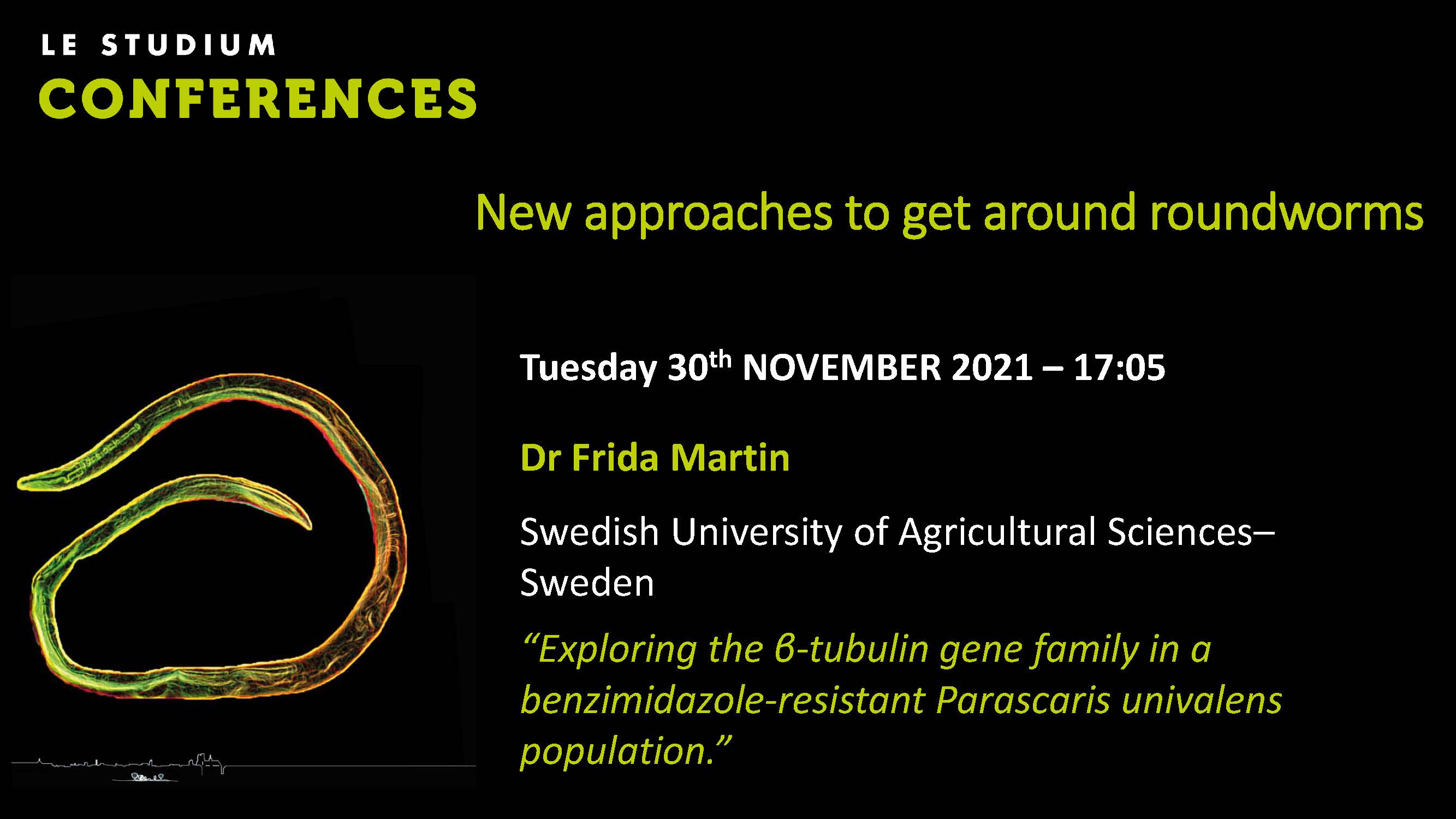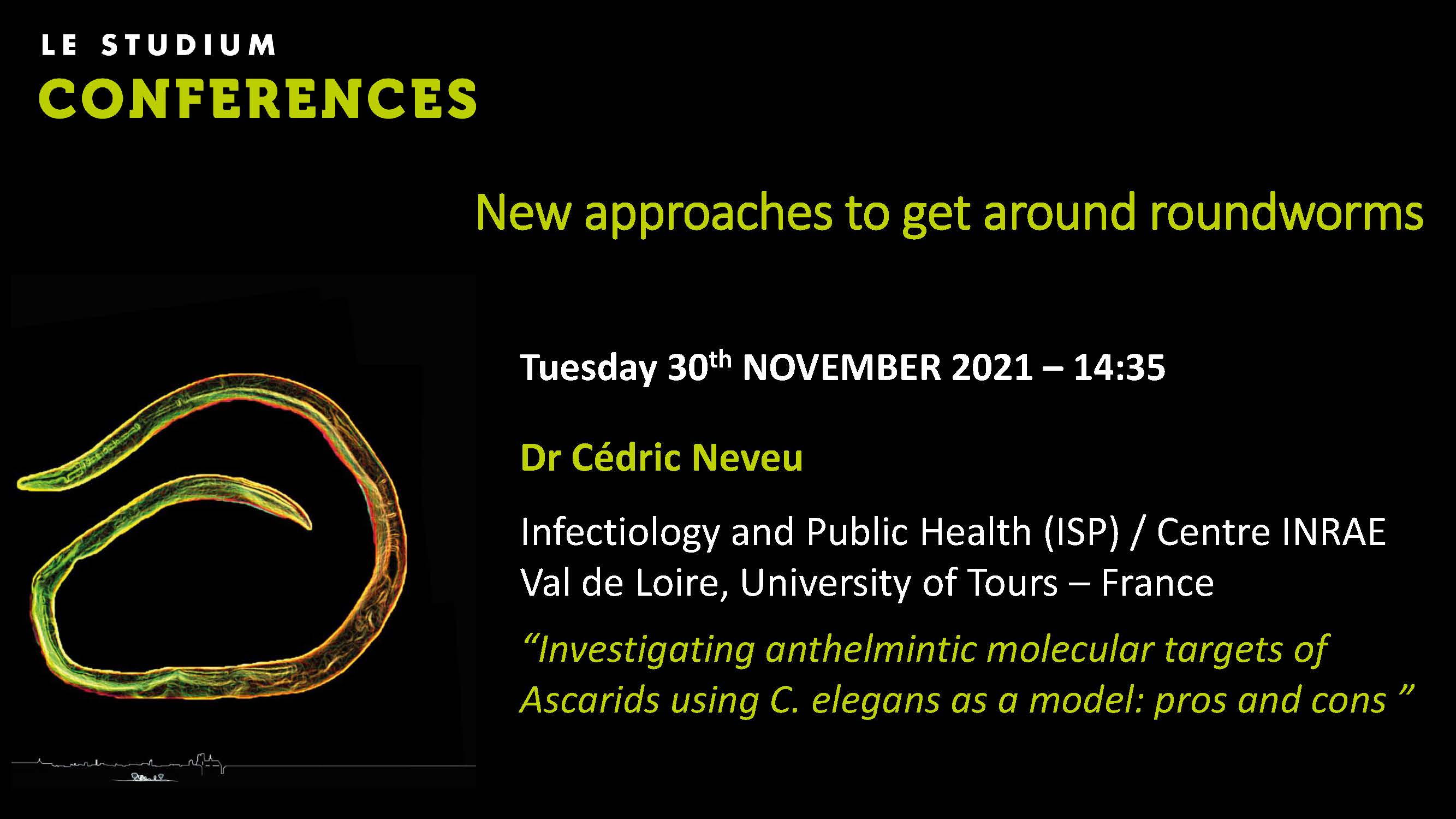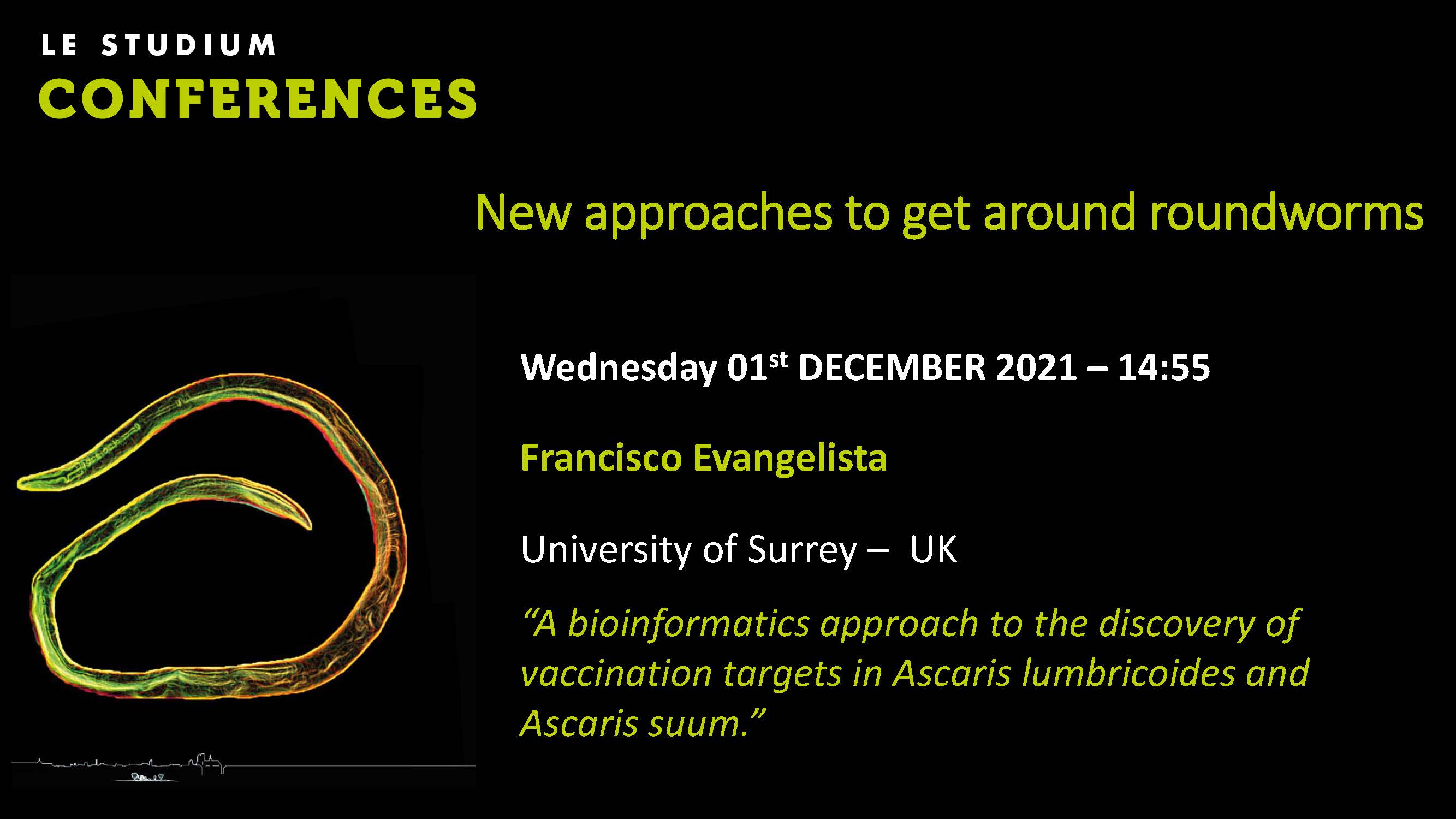Notice
Ben Jones - Disentangling the role of Ascaris β-tubulin isotypes in the emergence of anthelmintic resistance
- document 1 document 2 document 3
- niveau 1 niveau 2 niveau 3
Descriptif
Ascariasis affects nearly one billion people, predominantly in the developing world. Ascariasis also affects pigs globally and reduces production yields via decreased growth and condemnation of livers. The predominant drugs used to treat ascariasis are the benzimidazoles (BZ). Despite using BZ anthelmintics for decades and BZ resistance occurring in other helminths, there has been little work on resistance in pig ascariasis. Benzimidazoles work by interacting with β-tubulin and the mutations causing resistance are known in some nematodes. Seven β-tubulin isotypes were identified using Ascaris genome data, and expression profiles were analysed at various developmental stages. Only three of the seven isotypes were highly expressed, making these the most likely to influence drug susceptibility. In silico docking simulations were used to model how BZs interact with β-tubulin proteins from Ascaris isotypes. Benzimidazoles were docked in the binding pocket containing resistance associated residues. The β-tubulin-BZ models then underwent molecular dynamics simulations which showed that interaction between BZs and residue 198 are key to drug binding and mutations in this residue lead to reduced binding energy. Mutations at residue 200 may also lead to resistance by interfering with binding at residue 198. In conclusion, the key interactions vital for BZ binding with β-tubulins have been identified and show how mutations can lead to resistance in Ascaris.
Thème
Dans la même collection
-
Dr Jeba Jesudoss Chelladurai - P-glycoproteins of Toxocara canis: characterization of expression an…
The interaction of the macrocyclic lactones with P-glycoprotein have been well-characterized in different ascarids and have been implicated in drug resistance. While adult stages of the canine
-
Dr Paul Williams - Calcium imaging of Cry5B action on the intestine of Ascaris suum
Crystal (Cry) proteins from Bacillus thuringiensis are used as effective insecticides. These pore forming toxins act within the midgut of insects killing them. Cry5B, has been found to target and
-
Sara Roose - New insights into the use of serology as a diagnostic tool for Ascaris infections in h…
To monitor and evaluate mass drug administration (MDA) programs for soil-transmitted helminths (STHs) the diagnostic standard is the microscopic detection of STH specific eggs in stool smears (Kato-
-
Prof. Richard Martin - Calcium imaging in the intestine of Ascaris suum, TRP channels and diethylca…
The intestine of nematode parasites is involved in more than digestion, absorption and storage of nutrients. It is involved in vesicular trafficking, ageing, innate immunity, drug metabolism and
-
Prof. Georg von Samson-Himmelstjern - Functional analysis of heterologous expression of Parascaris …
This presentation will provide an overview on recent investigations concerning the P-glycoprotein gene family in the equine roundworm Parascaris univalens. As prominent members of the ATP-Binding
-
Dr Andrea Springer - Modulation of the porcine intestinal microbiome and metabolome by Ascaris suum…
Ascaris suum affects feed conversion and weight gain of pigs, but effects on intestinal microbiota remain largely unexplored. Therefore, the intestinal microbiome and metabolome was assessed in pigs
-
Prof Lindy Holden-Dye - Ascaris physiology and pharmacology -what next? and how?
In this talk I will review the progress in providing insight into fundamental aspects of Ascaris physiology and pharmacology and the experimental approaches that have been adopted and developed to
-
Dr Jianbin Wang - Genomes and transcriptomes of the parasitic nematode Ascaris
Nematodes of the genus Ascaris are important parasites of humans and swine, and related genera (Parascaris, Toxocara, and Baylisascaris) infect mammals of veterinary interest. Over the last decade,
-
Marie-Kristin Raulf - Binding of host C-type lectin receptors to Toxocara spp.-derived ligands – re…
Toxocara canis and Toxocara cati are worldwide-distributed zoonotic intestinal helminths with frequent exposure to humans in which they can cause severe disease pathology. Upon infection, initial
-
Frida Martin - Exploring the β-tubulin gene family in a benzimidazole-resistant Parascaris univalen…
Benzimidazole (BZ) resistance is rare in ascarids in contrast to strongyle parasites where this resistance is widespread. In strongyles, single nucleotide polymorphisms (SNPs) at codons 167, 198 and
-
-
Dr Francisco Evangelista - A bioinformatics approach to the discovery of vaccination targets in Asc…
Background: Ascariasis remains the most prevalent zoonotic helminthic disease affecting both humans and pigs and preventive chemotherapy continues to be the most widespread control method.

